When your dishwasher overflows into the sink, it can be both frustrating and messy. This common household issue is often caused by blockages or improper drainage and can sometimes lead to lingering odors or even water damage if left unresolved.
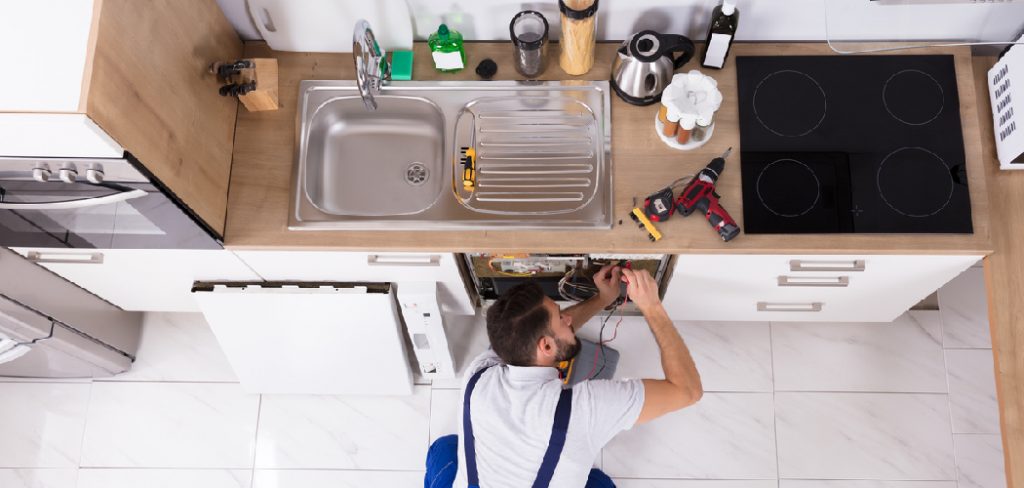
Fortunately, understanding the causes and steps to address this problem can help you restore your kitchen to normal functionality quickly and prevent future occurrences.
In this article on how to fix dishwasher overflow into sink, we will discuss some common causes and solutions to this problem.
Causes of Dishwasher Overflow into Sink
There are several reasons why your dishwasher may be overflowing into the sink. Some of the most common causes include:
Clogged Drain
The most common cause of a dishwasher overflow is a clogged drain. Over time, food particles, grease, and other debris can gradually build up in the drain pipe and prevent water from draining properly. This leads to an overflow of water into the sink.
Faulty Check Valve
The check valve is a one-way valve that prevents water from flowing back into the dishwasher after it has drained. If this valve becomes stuck or faulty, it can cause water to back up and overflow into the sink.
Improper Installation
If your dishwasher was not installed correctly, it can lead to drainage issues and cause overflowing into the sink. For example, if the drain hose is not connected properly or is kinked, it will impede proper drainage and lead to overflows.
Dishwasher Not Level
A dishwasher that is not level can also contribute to overflow issues. When a dishwasher is not level, the water may not fully drain out of the tub and instead pour into the sink.
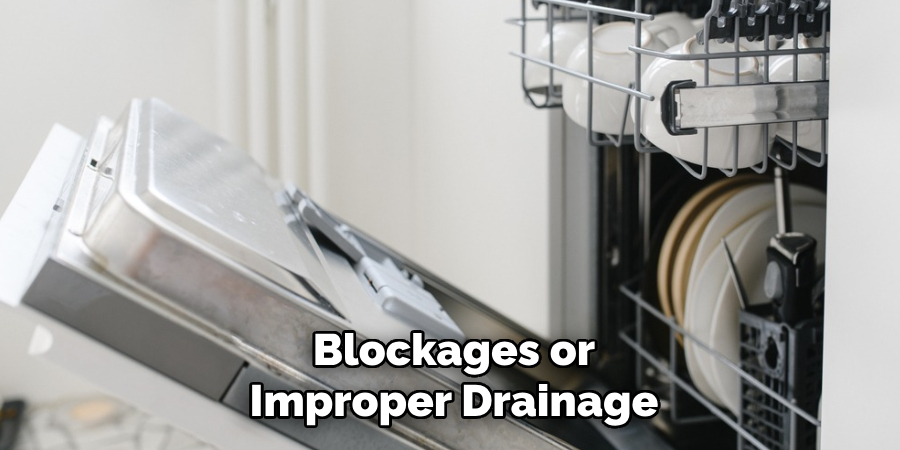
8 Step-by-step Guidelines on How to Fix Dishwasher Overflow Into Sink
Step 1: Turn Off the Power
Before attempting any repairs, it’s crucial to prioritize your safety. Begin by turning off the power to your dishwasher to eliminate the risk of electric shock. You can do this by unplugging the dishwasher from the outlet or switching off the circuit breaker that controls the appliance.
Always double-check to ensure the power is completely disconnected before proceeding to the next steps.
Step 2: Locate the Check Valve
The check valve is typically located in the dishwasher drain or near the drain hose connection. To find it, you may need to refer to your dishwasher’s manual, as the exact location can vary depending on the model. Begin by removing the lower dish rack to access the bottom of the dishwasher.
Look for the valve, which is a small plastic or rubber device designed to allow water to flow in one direction and prevent backflow. Inspect the check valve for signs of blockage, debris, or damage. If it appears stuck, clogged, or faulty, cleaning or replacing it might be necessary to resolve the overflow issue.
Step 3: Clear Clogs from the Drain
If the check valve is not causing the overflow, then it’s likely that there is a clog in your dishwasher drain. To clear out any blockages, start by removing the dishwasher’s lower spray arm and filter. This will give you access to the drain area.
Using a small brush or toothpick, remove any visible debris from the drain hole. You can also use a plunger to dislodge any stubborn clogs inside the pipe. Once cleared, rinse with hot water to flush out remaining debris.
Step 4: Check for Kinks in the Drain Hose
A common cause of dishwasher overflow into the sink is a kinked or improperly positioned drain hose. Locate the drain hose, which is typically connected to the back of the dishwasher and attached to the plumbing underneath the sink. Inspect the entire length of the hose for any bends, kinks, or obstructions that may be restricting water flow.
If you find a kink, carefully straighten it out to ensure a smooth flow of water. Additionally, make sure the hose is securely connected and elevated in a proper “high loop” configuration.
This setup prevents backflow and helps water drain correctly. If the hose is damaged or excessively worn, consider replacing it with a new one to avoid future issues. After checking and addressing the drain hose, test your dishwasher to see if the overflow problem is resolved.
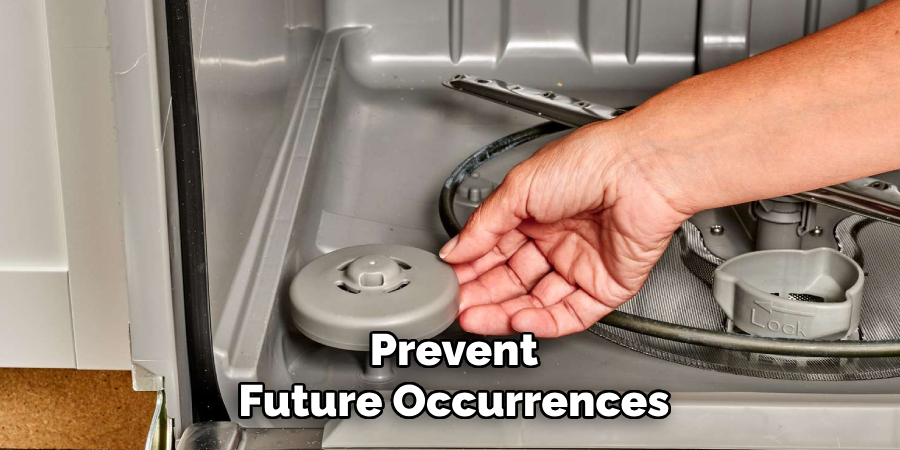
Step 5: Check the Air Gap
Some dishwashers are equipped with an air gap, which is a small device located on the countertop or sink. Its purpose is to prevent sewage from backing up into the dishwasher in case of clogs or blockages in the main drain line.
Overflows into the sink can occur if debris builds up in this device, causing it to malfunction. If you have an air gap, inspect and clean it out as needed.
Step 6: Inspect the Garbage Disposal
If your dishwasher is connected to a garbage disposal, a clog or blockage in the disposal can cause water to back up into the sink. Begin by turning off the power to dispose of the garbage for safety. Next, check the disposal for any clogs or debris that may be obstructing drainage.
Use a flashlight to inspect the disposal’s interior and see if there are any visible blockages. If you notice food waste or debris inside, carefully remove it using tongs or a wooden utensil—never use your hands. Once cleared, run the disposal with water to ensure that it is functioning properly.
Step 7: Check the Dishwasher Door Gasket
A worn or damaged dishwasher door gasket can also contribute to overflow issues. The gasket creates a watertight seal between the door and the tub, preventing water from leaking out during the wash cycle. Over time, this rubber material can become brittle or develop tears, causing water to seep out onto the floor or into the sink instead of draining properly.
Inspect your dishwasher’s door gasket for any signs of damage, such as cracks, tears, or wear and tear. If you spot any issues, consider replacing it with a new one to restore proper drainage and prevent further overflows.
Step 8: Test the Dishwasher
After completing all of the above steps, it’s time to test your dishwasher and see if the overflow issue has been resolved. Plug in the dishwasher or turn on the circuit breaker and run a full cycle with no dishes inside.
Observe how the water drains into the sink—there should be no overflows or backups. If everything looks good, then congratulations! You have successfully fixed your dishwasher overflow into the sink.
However, if you still experience issues with water overflowing from your dishwasher, it may be best to call a professional technician for further assistance. They can help identify any underlying problems and provide proper repairs to ensure your dishwasher is functioning correctly.
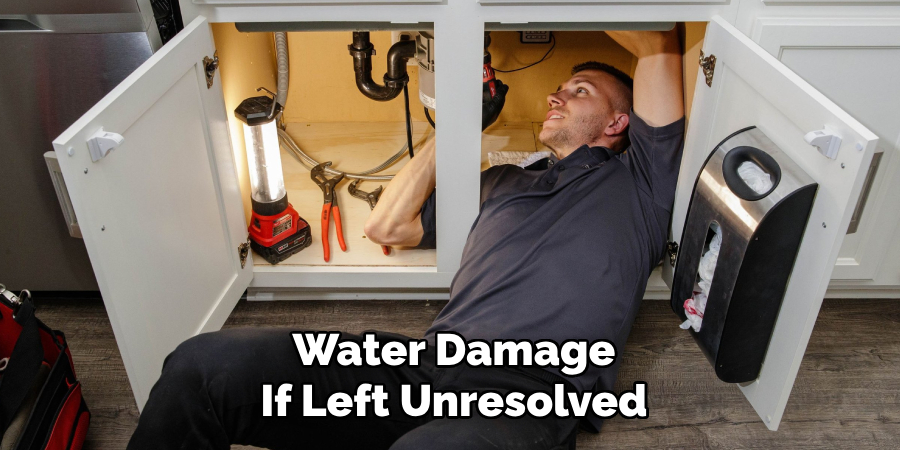
Following these step-by-step guidelines on how to fix dishwasher overflow into sink can help you troubleshoot and fix dishwasher overflow into the sink. Remember to always prioritize safety and consult a professional if needed. Now you can enjoy clean dishes without any worries of water backup or overflows!
Frequently Asked Questions
Q: Why is My Dishwasher Overflowing Into the Sink?
A: There are several potential reasons why your dishwasher may be overflowing into the sink, including a faulty check valve, clogged drain, kinked drain hose, malfunctioning air gap, or damaged door gasket. By following the steps outlined above, you can pinpoint and address the root cause of the problem.
Q: Can I Fix a Dishwasher Overflow Myself or Should I Call a Professional?
A: Depending on your level of expertise and comfort with DIY projects, you may be able to fix a dishwasher overflow yourself. However, if you are unsure or uncomfortable with any step of the process, it is best to call a professional technician for assistance to avoid causing further damage.
Q: How Often Should I Check and Clean my Dishwasher’s Drainage Components?
A: It is recommended to check and clean your dishwasher’s drainage components at least once every few months. This will help prevent buildup of debris and ensure proper functioning of your dishwasher. Additionally, regularly inspecting the dishwasher for any leaks or issues can help catch problems early on before they escalate into bigger and costlier repairs.
Q: My Dishwasher is Still Overflowing After Following These Steps—What Should I Do?
A: If you have followed all the steps outlined above and are still experiencing overflow issues with your dishwasher, it may be best to call a professional technician for further assistance. They can help identify any underlying problems and provide proper repairs to resolve the issue. Remember, safety should always be a priority when dealing with household appliances, so do not hesitate to seek professional help if needed.
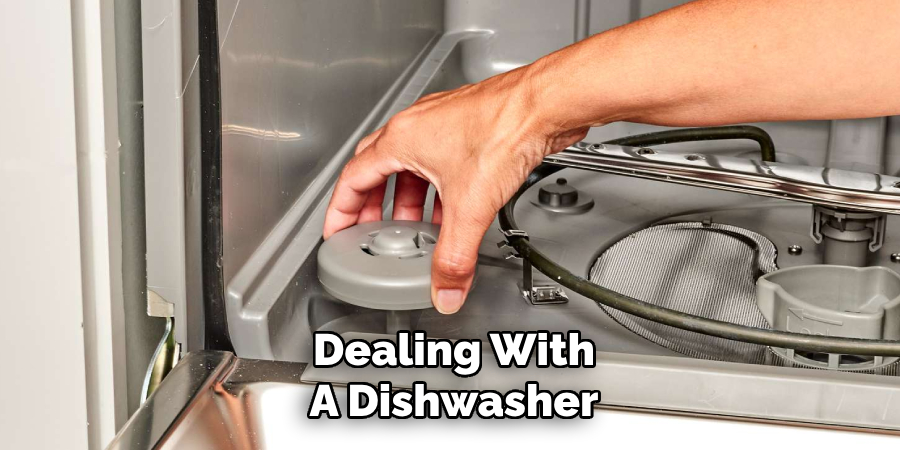
Conclusion
Dealing with a dishwasher that overflows into the sink can be frustrating, but with a clear understanding of the problem and the right steps, it is often a fixable issue. By inspecting and addressing common causes such as clogs, faulty components, or damaged parts, you can restore your dishwasher’s functionality and prevent future overflow problems.
Regular maintenance, including cleaning the drainage system and inspecting key components, is essential to keep your dishwasher running smoothly. However, if the issue persists despite your efforts, reaching out to a professional technician is always a wise choice. With these tips on how to fix dishwasher overflow into sink, you can enjoy a hassle-free kitchen and spotless dishes once again.
Professional Focus
Angela Ervin, a former interior designer turned blogger, specializes in kitchen design and renovations. Through her website, she blends her passion for cooking with design expertise, sharing practical and creative ideas. Known for balancing functionality and beauty, Angela’s insightful content has made her a trusted voice in home design and lifestyle.
About the Author
Angela Ervin, an experienced interior designer and blogger, combines her passion for kitchen renovations with storytelling. Living in Petersburg with her family, she enjoys cooking and testing her projects firsthand. Known for her humor and relatable style, Angela shares creative, functional design insights through her content, making her a trusted voice in home design.
Education History
University: Virginia Commonwealth University
Degree: Bachelor of Fine Arts (BFA) in Interior Design
- Angela’s education at VCU focused on mastering core interior design principles, including spatial planning, color theory, materials selection, and sustainable design practices.
- She gained hands-on experience through studio projects and collaborative design exercises, which honed her ability to create functional and aesthetically pleasing environments.
- Her coursework also emphasized problem-solving and practical applications of design, preparing her for real-world projects like her self-directed kitchen renovations.
- The program’s strong foundation in both technical skills and creative expression shaped Angela’s ability to seamlessly integrate form and function in her work.
